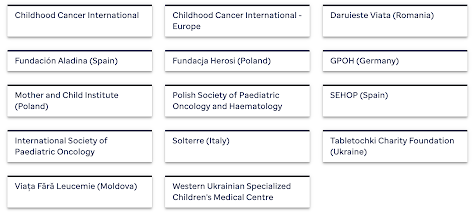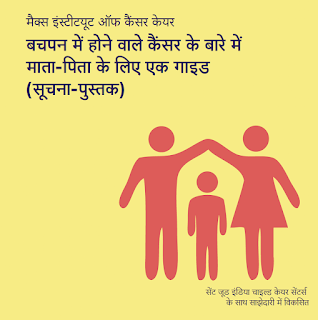Childhood Cancer India
A personal insight into various issues relevant to children with cancer, their families and health professionals involved in their care in India
Monday, 6 June 2022
5 Types of Paediatric Cancer You Need to Know About
Sunday, 5 June 2022
Childhood cancer can be treated
I am in the process of bringing all y blog posts in one place. Here is something I wrote a few years ago on the Max Healthcare platform.
https://www.maxhealthcare.in/blogs/childhood-cancer-can-be-treated
It is intended for the general public. The types of cancer affecting children are quite different from the cancers that affect teenagers and young adults. Childhood cancers have become a menace. However, a lot of progress has been made in treating childhood cancers in the recent decades
Monday, 11 April 2022
SAFER Ukraine - The Power of the Global Pediatric Oncology Community
According to https://en.wikipedia.org/wiki/2022_Ukrainian_refugee_crisis "More than 4.5 million refugees have since left Ukraine (as of 9 April 2022), while an estimated 6.5 million people have been displaced within the country (as of 18 March 2022). In total, more than ten million people – approximately one-quarter of the country's total population – had left their homes in Ukraine by 20 March. By 24 March 2022, according to UNICEF, more than half of all Ukrainian children had been forced to leave their homes."
SAFER Ukraine has established a virtual command center to coordinate evacuations and ensure treatment continues for pediatric oncology patients. The process includes determining transportation logistics and identifying high-risk patients who are deteriorating. The SAFER Ukraine team and volunteers translate medical records, coordinate departure travel and manage the logistics of transport across the border. In addition to the above efforts, the team also established a triage clinic in Poland. Patients and their families can rest and recover from the evacuation while awaiting assignment to a clinic for continued treatment.
Tuesday, 15 March 2022
Dinutuximab (Anti GD2 therapy) for children with high risk neuroblastoma now available in India
High risk neuroblastoma continues to be a childhood cancer which is challenging to treat and has poor outcomes. While smaller increments in survival have been made over the years, a big step-up in survival was when Anti-GD2 therapy (now known as Dinutuximab) was introduced and this was published by Yu et al in this landmark study. I had written a blog on this in 2010 and also reflected on the Indian situation. Since then Dinutuximab has become the standard of care for high risk neuroblastoma in high-income countries.
Low and middle income countries like India have not had access to the medicine, either through clinical trials, or through compassionate use. This has now changed and the first child received Dinutuximab in Mumbai last year and this was covered in the media - Mumbai child receives special injection to treat rare cancer. Subsequent to this, I have been informed that another child has received this treatment in Bangalore and there are a few others waiting to receive it.
While this is exciting and welcome, it is important to point out that AVAILABILITY does not equate to ACCESSIBILITY. And the main reason for that in this context is AFFORDABILITY. This drug is not manufactured in India but imported from Europe. Based on the information available to me, a child who weighs around 13 kg will need 3 vials per cycle and a total of 15 vials for 5 cycles. With each vial 11,000 Euros, the total cost is approximately INR 1.4 cr + 25% custom duties. With the right kind of paper-work and eligibility for discount, the custom fees may be waived off and the price of the drug could come down to INR 56 lakh. But this still remains out of reach of almost all children with high risk neuroblastoma in India.
In conclusion, it is a welcome positive step that Dinutuximab in now available in India. With time and increased use, we hope and expect the price to be driven down so that it becomes accessible to more children who need it.



